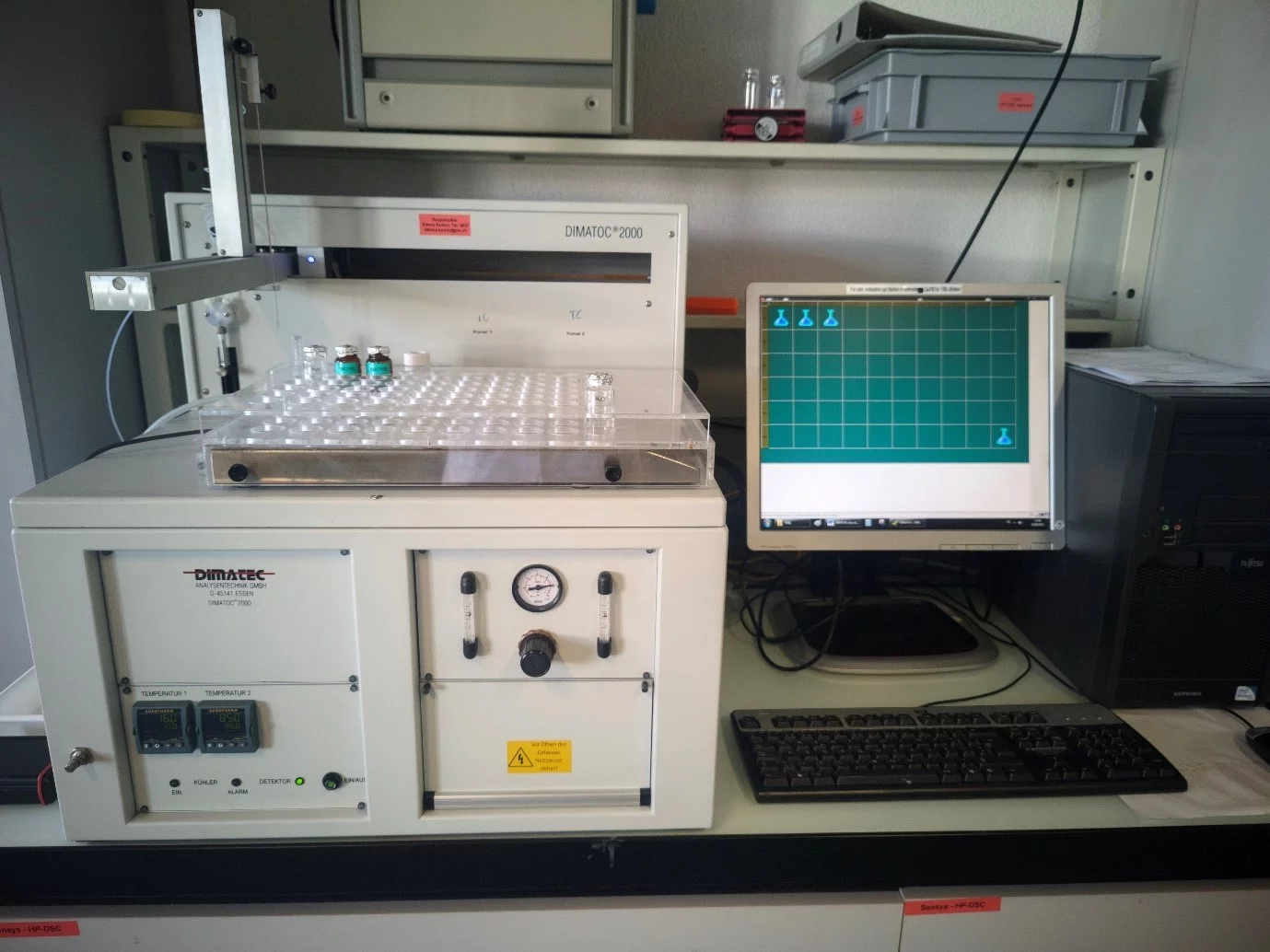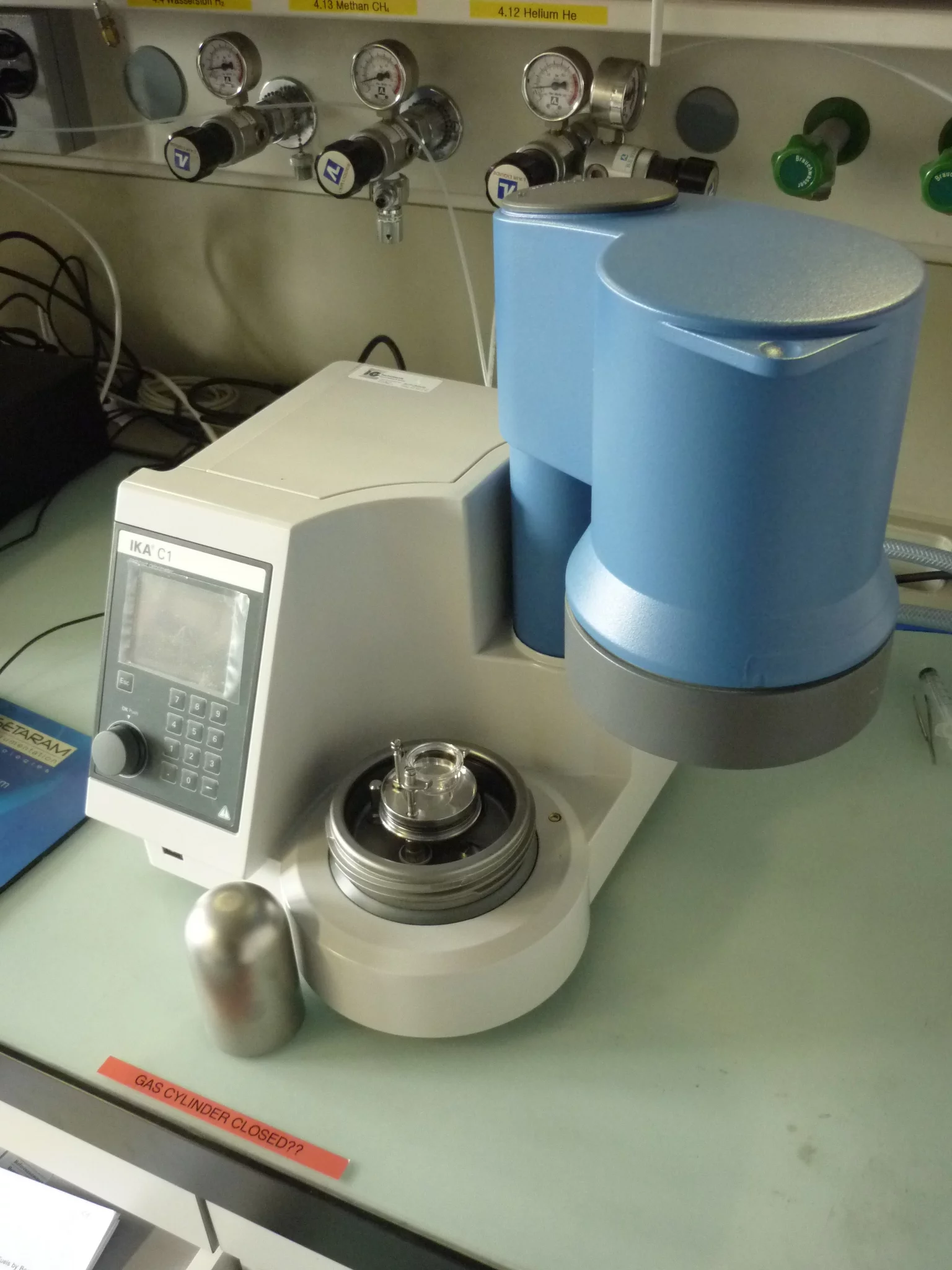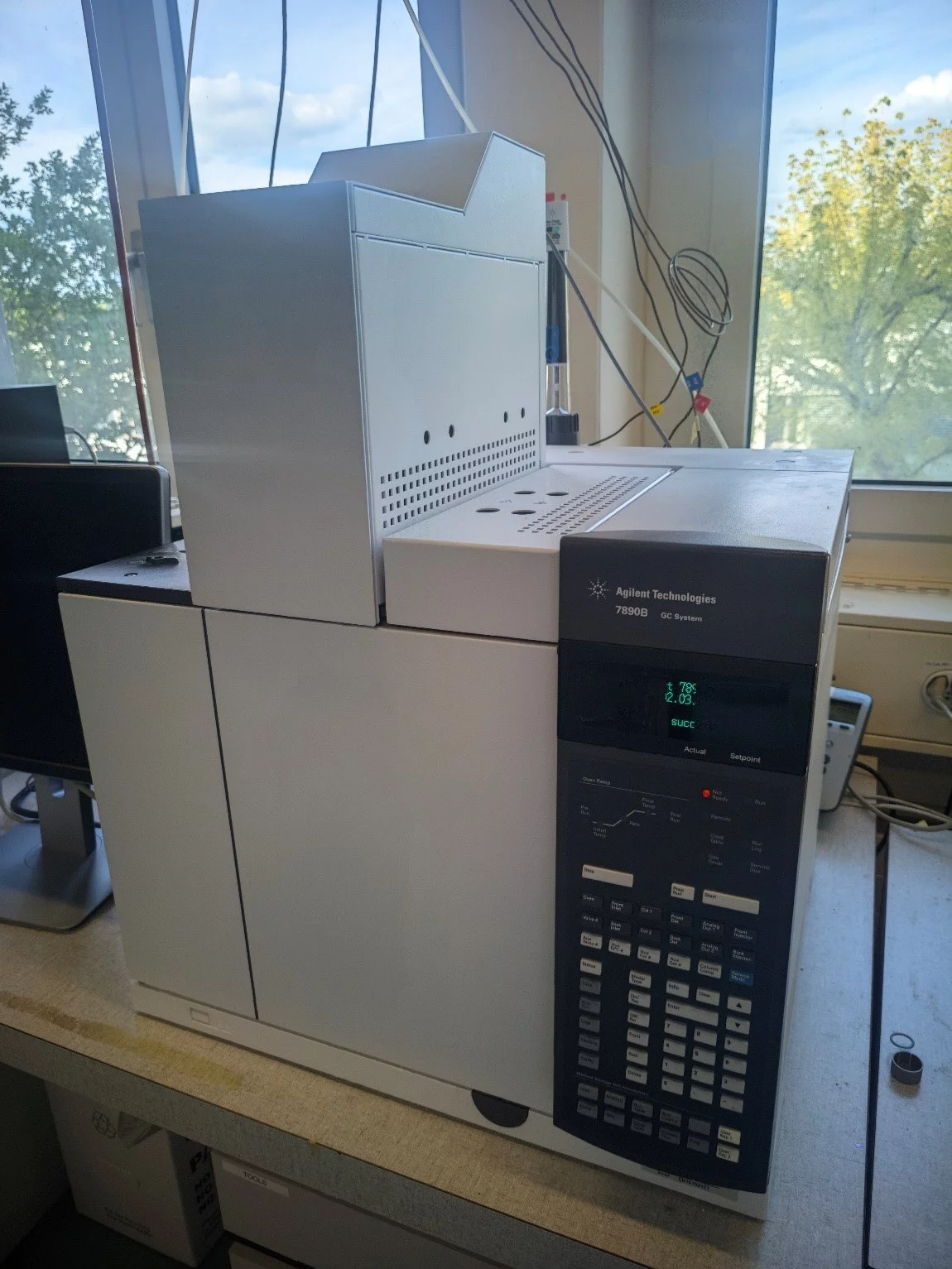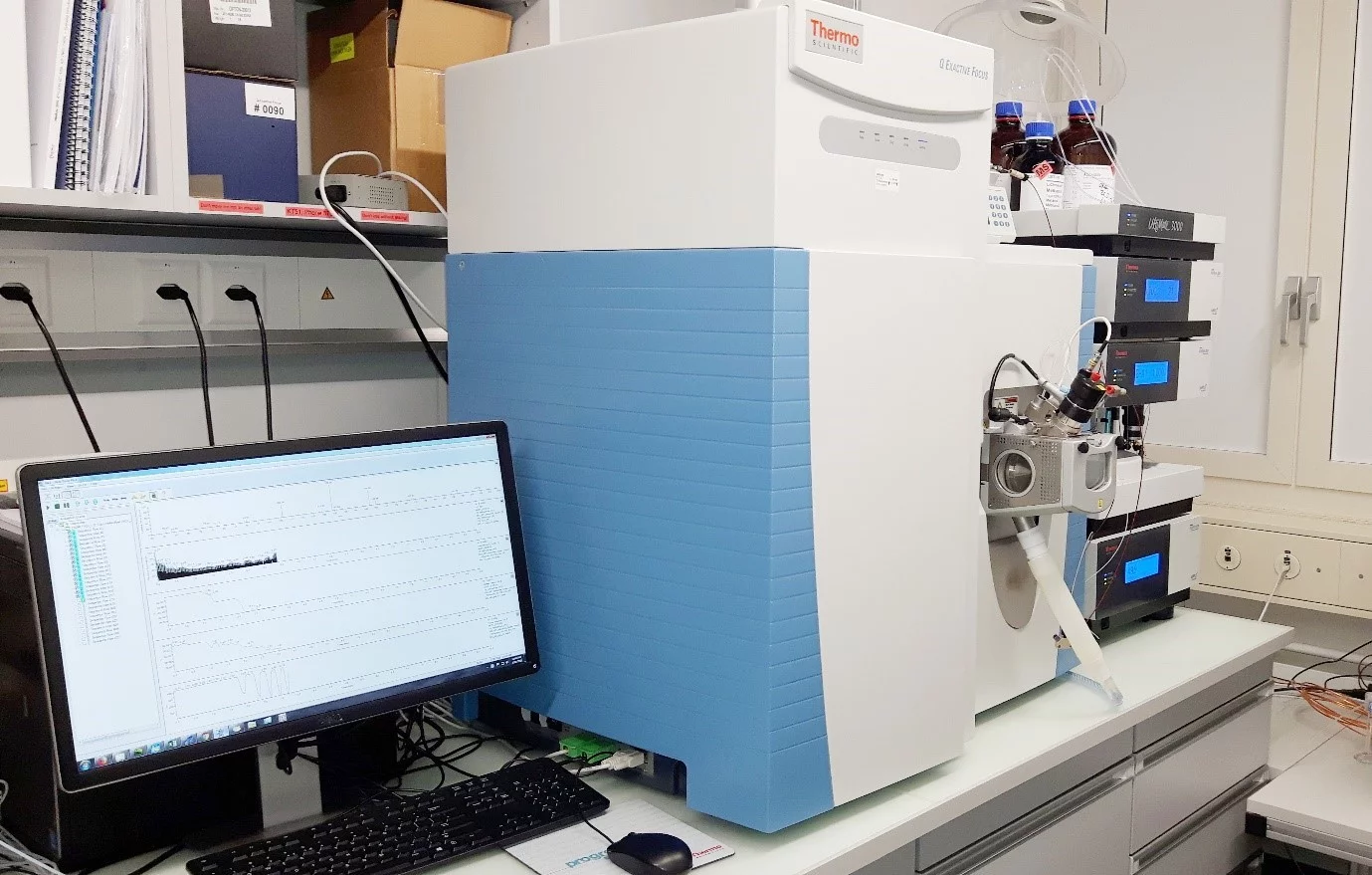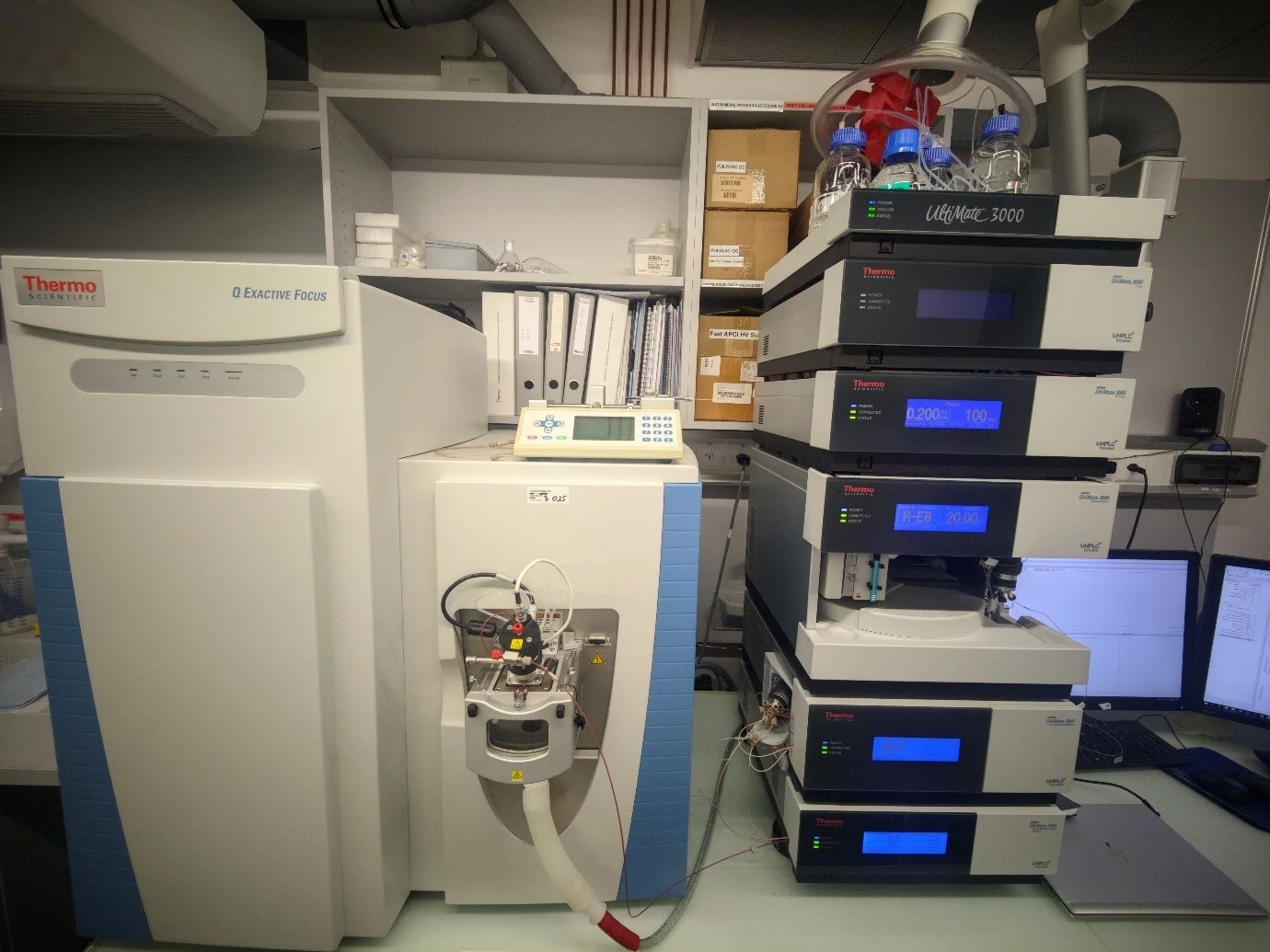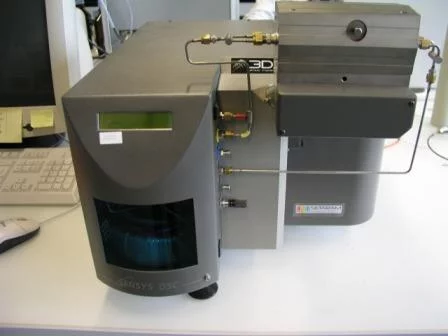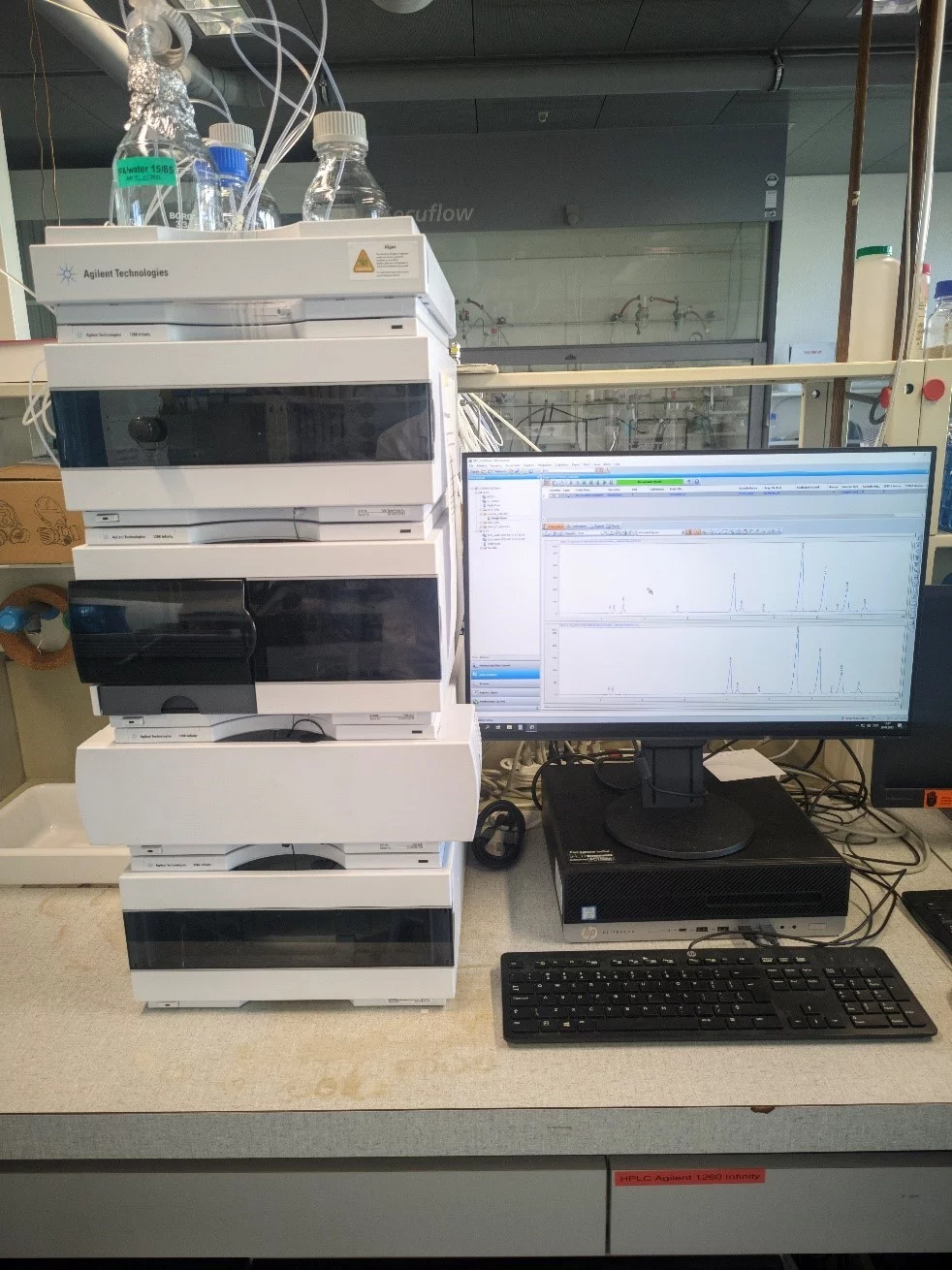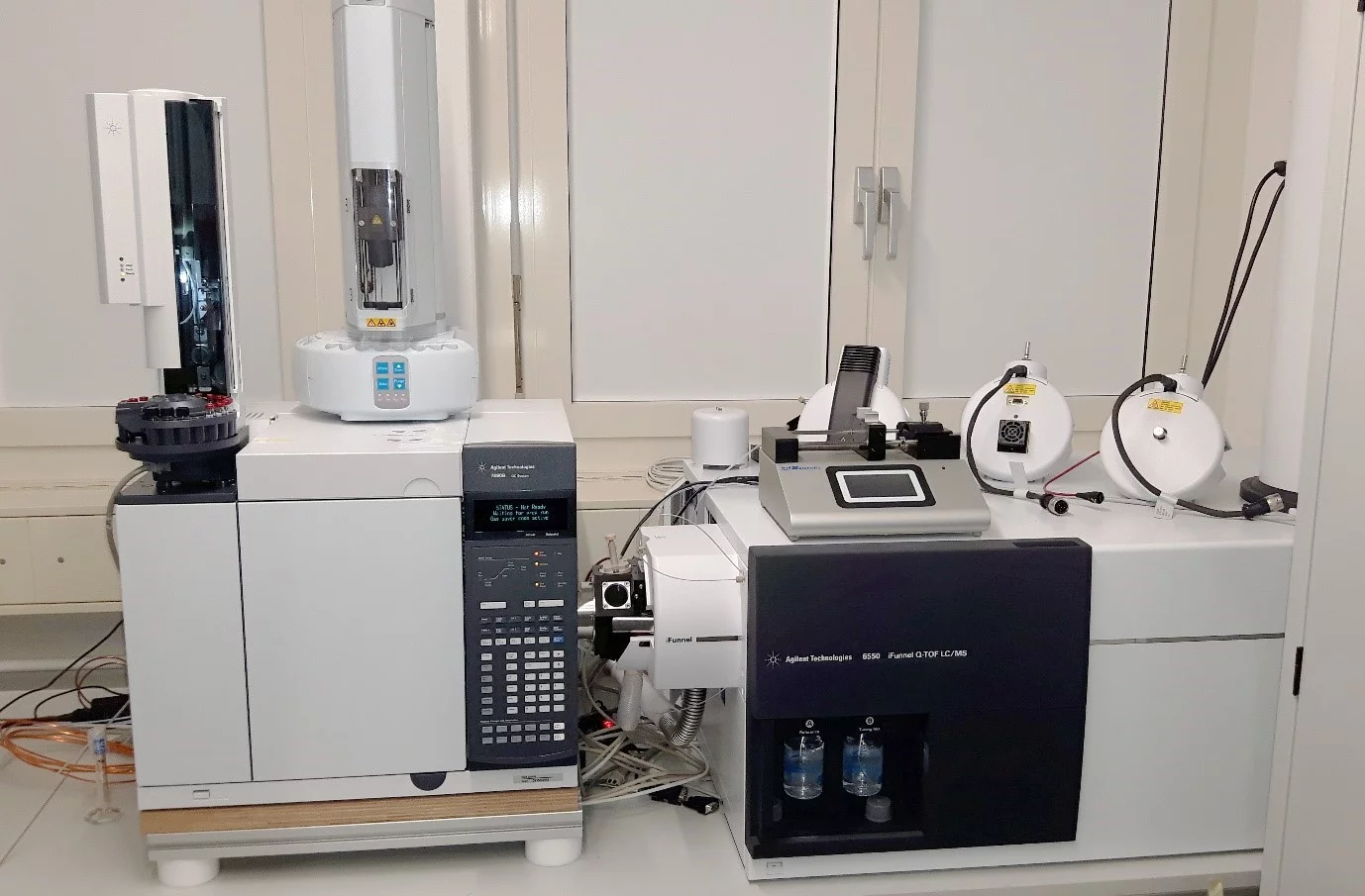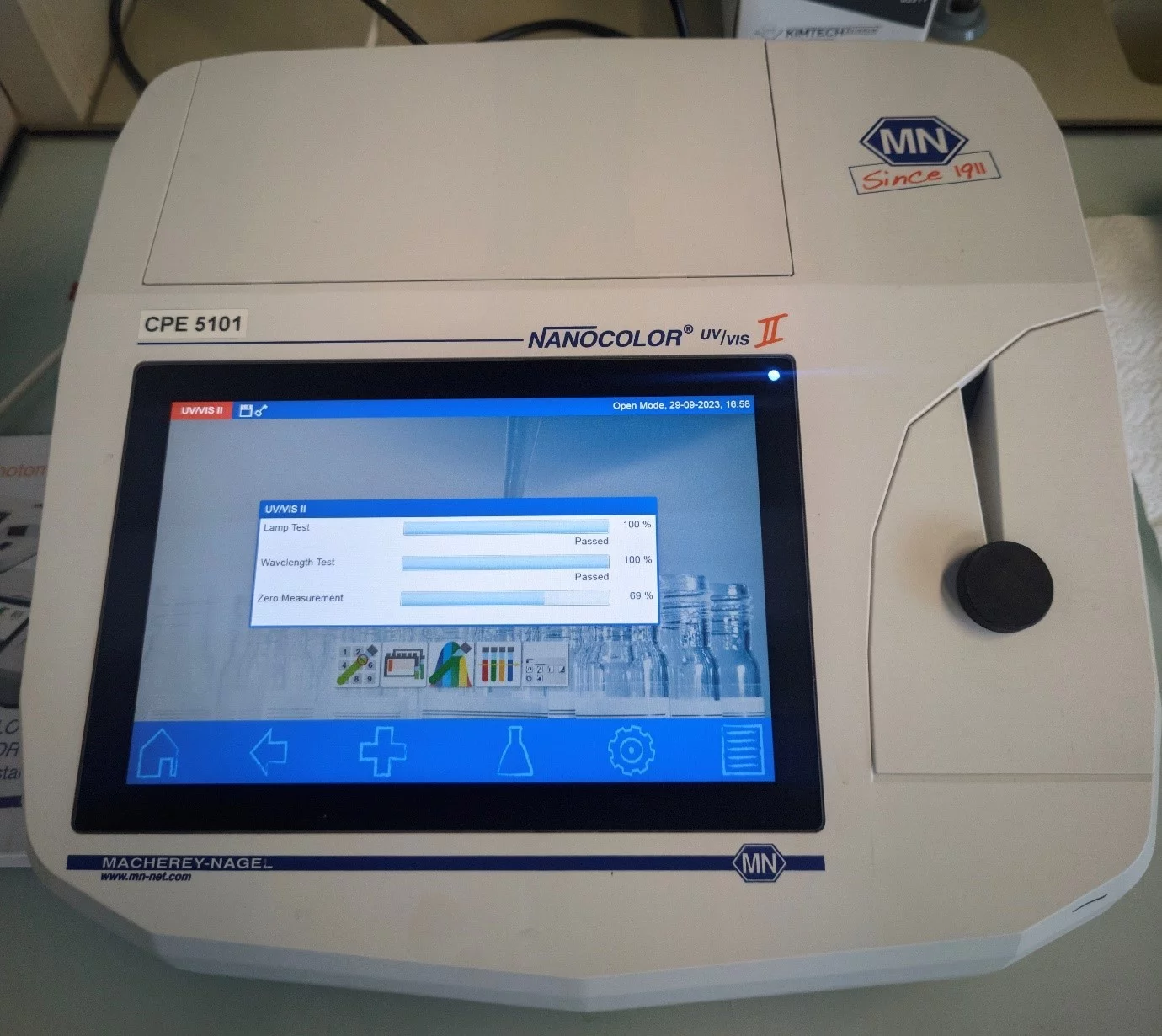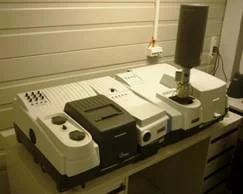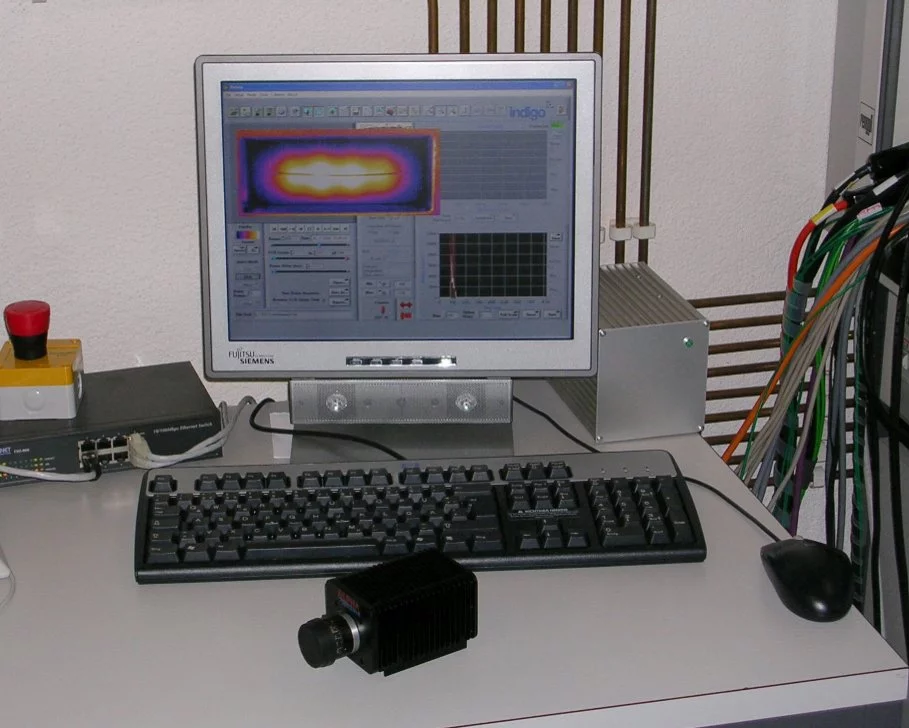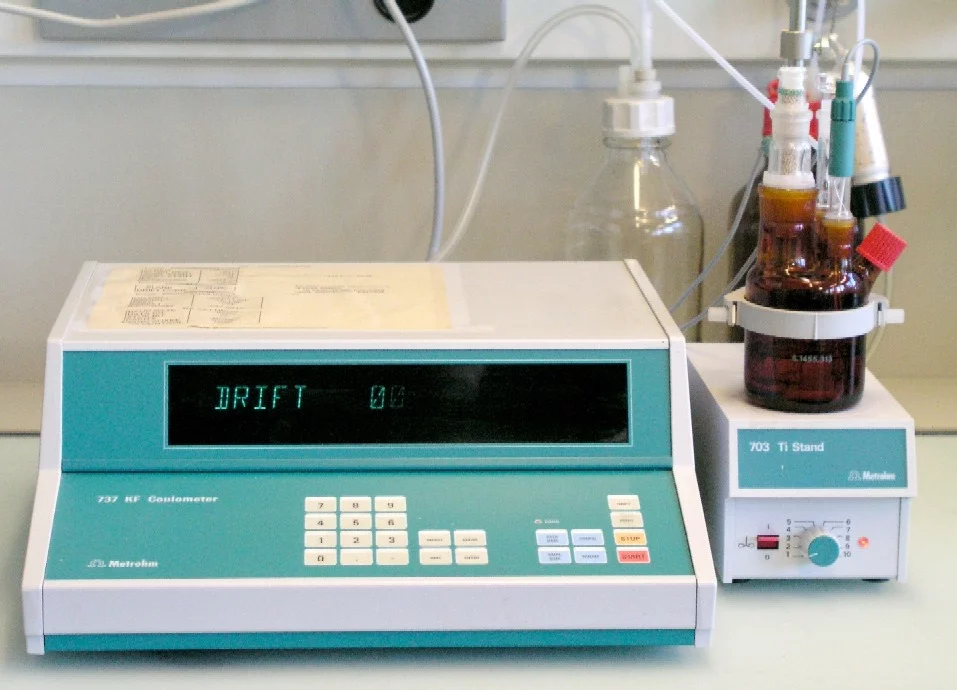TOC Analyser DIMATOC 2000
Laboratory analyzer for TOC, DOC, TC, TIC, NPOC, POC, TN b from ultrapure water to wastewater. The TOC measurement is carried out according to the principle of thermal-catalytic oxidation with subsequent NDIR detection. The DIMATOC 2000 uses two independent measuring channels and a carryover-free sample feeding system.
Contact: Dmitrii Sharkov
Bomb calorimeter
The bomb calorimeter IKA C1 is used for the gross calorific value determination of solid and liquid substances.
It may not be used for the testing of explosive samples. The gross calorific value is determined according to an isoperibolic measurement procedure at 22°C (optional 30°C). The combustion of the sample takes place in a closed vessel with oxygen excess. The temperature rise of the static jacket filled with water will be measured. The sample amount is dependent on the combustibility of the substance. The temperature increase during the combustion has to be between 1 K and 10 K (40 000 J). For most samples it is necessary to use about 0.5 g to 1 g per measurement.
Contact: Daniel Fischer
GC-NPD/TCD
Agilent 7890B GC, with two-column switching system TCD (Thermal Conductivity Detector) and NPD (Nitrogen–Phosphorus Detector) detectors.
NPD for gas chromatography is specific to nitrogen- or phosphorus-containing compounds. With this method, nitrogen and phosphorus can be selectively detected with a sensitivity that is 104 times greater than that of carbon.
Contact: Dr. Sasa Bjelic
Thermo Scientific Q Exactive Focus Orbitrap UHPLC-HRMS/MS System
The Thermo Scientific™ Q Exactive™ Focus benchtop LC-MS/MS combines quadrupole precursor ion selection and a high-resolution accurate mass with resolving power of up to 70,000 Orbitrap mass analyzer to deliver mass accuracy, sensitivity, and fast polarity switching while maintaining sensitivity compared to a triple quadrupole mass spectrometer.
Attached to a Thermo Ultimate UHPLC system for high-resolution chromatographic separation, photodiode array detector. The system allows the comprehensive identification and profiling of compounds present in complex samples. APPI (Atmospheric pressure photoionization) and APCI (Atmospheric pressure chemical ionization) sources for compounds that are difficult to ionize under standard ESI conditions are also available.
We use Compound Discoverer (CD) software for data reduction and mining. CD which provides a comprehensive set of advanced tools for processing and interpreting the knowns and unknowns. The Compound Discoverer software enables initial compound identification and comparative analyses.
Contact: Dr. Sasa Bjelic
HP DSC
Sensys DSC manufactured by SETARAM with Calvet-style sensor. High-pressure, high-temperature isochoric measurements are performed up to 500 bar and 600°C using crucibles made of Incoloy® with an inner volume of 130 µL.
Contact: Dr. David Baudouin
GPC
GPC (Gel Permeation Chromatography) is a chromatographic method for determining molecular weight distributions of polymers and oligomers. The macromolecules are separated on columns according to their volume, and their retention time is determined. The molecular weight corresponding to a certain retention time can be determined using polymer standards with known molecular weight; for our biomass-related research, dimethyl sulfoxide (DMSO) is used as an eluent and an RID detector to detect the macromolecule fractions.
Contact: Dmitrii Sharkov
Agilent 1290 Infinity II / Q-ToF 6550 iFunnel UHPLC-HRMS/MS System
This system is similar to Orbitrap but offers a higher scanning rate and a slightly higher dynamic range that is good for high-throughput untargeted analyses in full-scan mode.
We have the APPI and APCI ion sources also.
Another advantage is the ability to combine with the GC.
Contact: Dr. Sasa Bjelic
GC-FID/Q-ToF
Agilent 7890B, equipped with FID (Flame Ionization Detector) and possibilities to couple with APCI/Q-ToF.
The GC is used to analyze volatile species like hydrocarbons, PAHs, PCBs, phenols, etc.
APCI (Atmospheric pressure chemical ionization) source with Q-TOF accurate mass measurements opens possibilities to obtain the molecular structure of the species.
Contact: Dr. Sasa Bjelic
Spectrophotometer
The spectrophotometer NANOCOLOR UV/VIS II is a high-precision instrument applicable in all water and wastewater analysis areas. Several commercial standardized colorimetric sets are readily available. It also offers color/turbidity measurements and scans the 190–1100 nm range.
Contact: Daniel Fischer
FTIR-Raman
FTIR-Raman setup with a Nd:YAG-Laser (1064nm) for standard measurements and measurements in the step scan mode (SST) in connection with a chopper and lock-in amplifier for in-situ experiments. See also FTIR-Raman
Contact: Dr. David Baudouin
IR Camera
- Spectral range: 900 - 1700 nm
- Detector: Indium Gallium Arsenide
- Array format: 320 x 256
- Pixel: 30 x 30 microns
- Frame rate: 30 Hz
- Temperature range: 20 - 1200°C
Contact: Prof. Dr. Frédéric Vogel
Karl Fischer Titration
KF Determination of water contain (>10 ppm) in sample with Karl Fischer method.
Contact: Dmitrii Sharkov


